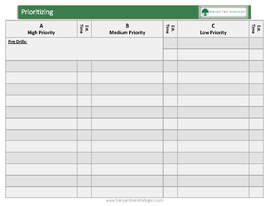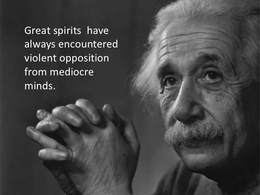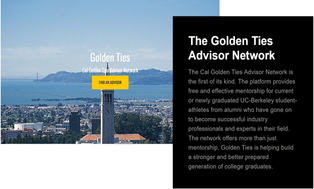 Building off the great reaction we received from our post on productive solitude we started to notice that in our work conversations we were asking leaders how they were organizing their thinking and in what format. Were they using a computer, a phone, a note pad, or a bound notebook? When did they collect themselves and organize? Who did they share it with, and how did they share it? The answers were all over the board, and many didn’t really have a system in place. They offered up that they are bouncing around trying whatever the newest form of technology has to offer. We also noticed that many leaders thought that the idea of sharing what their tasks was a big enabler for productivity. However, that wasn’t really playing out as they thought. It was leading to more emails and more confirmations on non-mission critical tasks. Does this sound familiar? Enter in the concept of a template as a way to create boxes waiting to be filled with answers that challenge you to prioritize your thinking. An individual benefits by working with a task allocation template like the one above. The act of not just writing down your tasks, but prioritizing them, and then...
0 Comments
 One of the major headwinds to a great summer is if you are only 50% of the way to your annual goal by now, you are actually behind the number. This is because you will lose ground in Q3, and may not have the time to catch up in Q4. Being below goal is not a happy place, and could even be considered mediocre. If you are the leader it is easy to blame your people, but in a recent article by Joseph Grenny he articulates why it might be the leader's fault, and he shares a couple of ways to bring the big middle of your team up a few notches. Grenny is the co-author of one of our favorite books “Crucial Conversations, tools for talking when the stakes are high”. In this article he wrote for the Harvard Business Review he shares several ways to help the team visualize what their indifference could cause. We think this hits the spot when it comes to larger group activities. The big middle is too....  Having a trusted friendship with some person years older or younger than you is a true gift. We often refer to these non-familial connections as mentors or mentees. The roots of the word go back to ancient Greece when Mentor who was a friend of Odysseus was entrusted with the education of Odysseus' son Telemachus. Relationships that are strong have certain elements that help them build. Affinity, time, and shared experiences are all ingredients. One of the outcomes from a strong cross generational relationship is that it can allow the subtle gift of wisdom to present itself. When wisdom arrives, it means the mentor has built up enough trust with the younger party to share their best insights and perspective. Often times this can be life changing for the mentee. Yet for all its benefits, great mentors are in short supply. Why is this? It may have something to do with the all-important shared experiences. The generations don’t always do things together, and thus it is...  It was front page news in 1982 when IBM announced it was laying off employees, the security of lifetime employment with Big Blue was in doubt. The undertone to others was this meant that almost no private sector employee was safe. From moments like that 35 years ago to today, the idea of a personal brand and its cultivation have been forming. You, the individual, have the ability to create what the brand marketers will define as a 'promise wrapped up in an experience' and LinkedIn has been building a platform for your brand since its founding in 2002. In the last five years LinkedIn has not only been a great place to store all your contacts, it is a great place to share your thoughts and perspectives. In a business world where almost all employment contracts are “at-will” (which means you are working week to week at the whim of your boss), it is increasingly important to have a place to share what you have to offer an industry or marketplace. There are several key actions to consider when it comes to publishing on LinkedIn. The first is to share what others have posted and add your comments. This is easy lifting and benefits the person who created the original content. The second is to.... |
This section will not be visible in live published website. Below are your current settings: Current Number Of Columns are = 1 Expand Posts Area = Gap/Space Between Posts = 10px Blog Post Style = card Use of custom card colors instead of default colors = 1 Blog Post Card Background Color = current color Blog Post Card Shadow Color = current color Blog Post Card Border Color = current color Publish the website and visit your blog page to see the results Categories
All
Drew Sanders BlogSome of our awesome posts are from our newsletter Branches & Roots, an 8x a year publication. For full annual volumes see our buttons below! Even better sign up for the newsletter so you don't miss out. Archives
November 2023
|
 RSS Feed
RSS Feed
